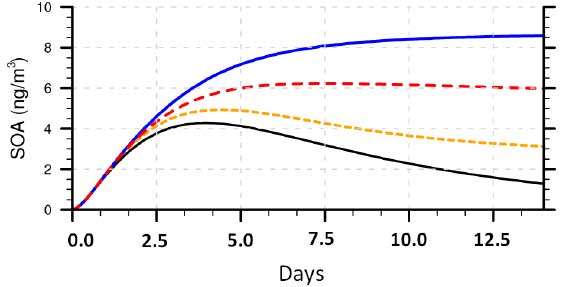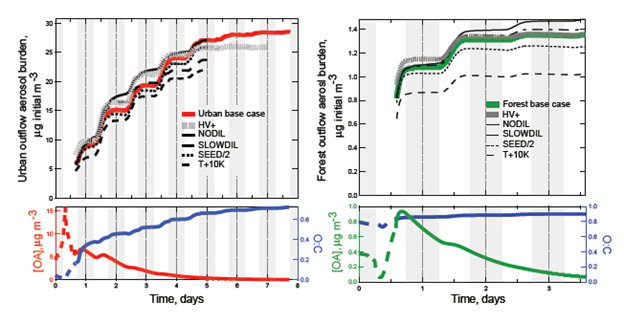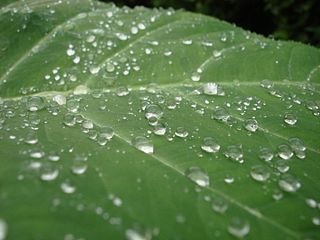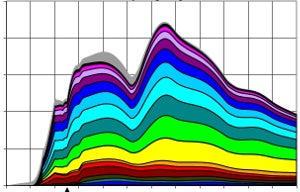GECKO-A Research
Research Highlights

Photolysis of Organic Aerosols (2015)
A multitude of recent atmospheric observations show that organic aerosols are ubiquitous and often more abundant than other particles such as sulfate, nitrate, soot, and dust. These large amounts of organic particles contribute to the health impacts of air pollution, to regional visibility reductions, to both cooling and warming tendencies of radiative forcing, and to modified cloud properties and precipitation patterns.

Multiday production of SOA in urban and forest outflow (2015)
Secondary organic aerosol (SOA) production in urban and biogenic outflow was investigated using the explicit gas-phase chemical mechanism generator GECKO-A [Lee-Taylor et al., 2015]. Urban outflow simulations show several-fold increases in SOA mass continuing for multiple days, whereas forest outflow simulations showed only modest SOA mass increases, and no long-term growth.

Gas-Phase Dry Deposition as a Major Removal Mechanism for Secondary Organic Aerosols (SOA) (2014)
Removal of secondary organic aerosols (SOA) from the atmosphere has been studied far less than its equal, production. In current regional and global chemistry models rainout is the dominant loss of SOA. Here we show the importance of a less direct pathway, in which large scale evaporation of SOA particles occurs as a re-adjustment to gas-particle partitioning when semi-volatile organic gases are lost by dry deposition to the Earth’s surface.

Modeling of SOA formation using an explicit gas-phase chemical mechanism (2011)
The mechanisms by which secondary organic aerosols (SOA) form in the atmosphere are a topic of much current research. Parameterizations used in air quality and Earth systems have difficulty reproducing observed quantities of ambient aerosol, at least in part because of their inability to account for the diversity of chemical species involved in SOA formation.